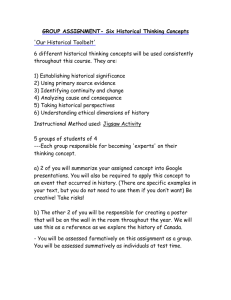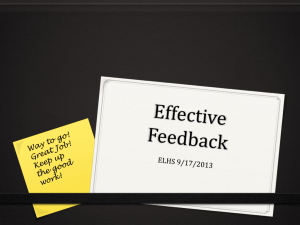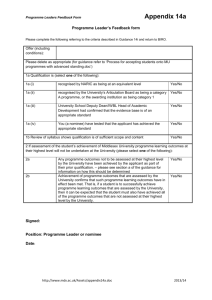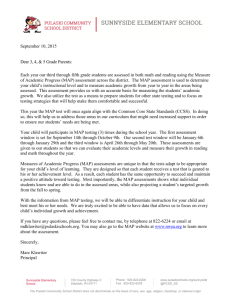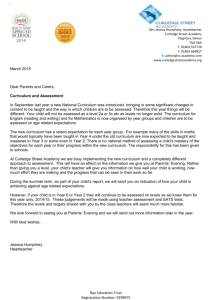How Can Quality Be Assessed?
advertisement
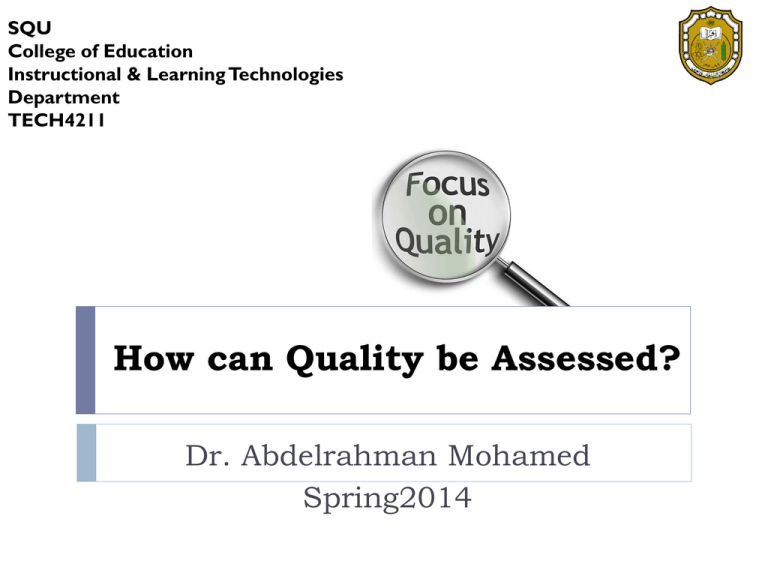
SQU College of Education Instructional & Learning Technologies Department TECH4211 How can Quality be Assessed? Dr. Abdelrahman Mohamed Spring2014 How can Quality be Assessed? Quality assurance is the responsibility of every one in the educational institution. Assuring quality should be a continuous and ongoing process. Assuring quality should not considered as a one time activity for accreditation alone. How can Quality be Assessed? Quality assurance is done in the following way: ▄ Self evaluation ▄ Peer review by a panel of experts ▄ Analysis of statistical information or use performance indicators or the best practices benchmarking ▄ Surveys of students, graduates, employers, professional bodies. ▄ Testing the knowledge, skills and competencies of students. How can Quality be Assessed? The major ways used to assure quality in education are: Self-evaluation/ self-study Best practices benchmarking External quality monitoring How can Quality be Assessed? Self-evaluation/ self-study Self-evaluation is like looking at ourselves in a mirror. This is how we know our strengths and limitations are. Self- evaluation would be an indicator for continuous improvement and a first step for ensuring quality. How can Quality be Assessed? Best Practice Benchmarking best practices: methods that reliably lead to better results benchmarking: systematic process of evaluating organization using best practices as their goals. Best Practice Benchmarking is a continuous systematic process for evaluating the services and work processes of organization that are recognized as representing the best practices for the purpose of organizational improvements. How can Quality be Assessed? Benchmarking as a process has four main activities: Comparing one thing with the other. Creating and using criteria to evaluate differences between two things and recognizing which is better. Use the experience to identify the direction for change. Implement the required change to improve (Jackson and Lund, 2000). How can Quality be Assessed? External Quality Monitoring (EQM) It is a process of continuous improvement, mark of excellence , and recognition of all the efforts of the academics by their peers. It offers an impartial and objective mechanism for assessing the educational institution by a peer team not directly related to the institution. Visit by a peer teem is a common activity in EQM, which critically analyses the self study report. The peer team checks institutional reports, record, and policies. It also meets and discusses with the top management, principals, HoDs, teachers, students and support staff to make its opinion on quality. External quality monitoring/assessment is preferred all over the world . How can Quality be Assessed? Market-driven Approach Rankings of educational institutions have become a huge business. Ranking help students to choose the educational institution for their choice. The market driven approach to quality assessment through rankings done by media organizations such as: Times Higher Education Supplement http://www.timeshighereducation.co.uk/world-university-rankings/201314/world-ranking US News Webometrics Ranking of World Universities“ http://www.webometrics.info/en How can Quality be Assessed? Market-driven Approach The process of ranking is quite often criticized: Most of these rankings depend on the “voices of the alumni” and thus are perception based. The criteria are never transparent Lack of consensus in their criteria. Reflective exercise How do you visualize to assure quality in your institution, and why? Discuss the importance of self-evaluation. (group work for class discussion)


